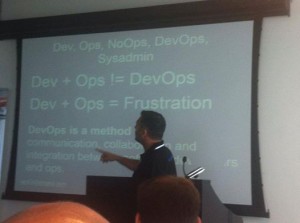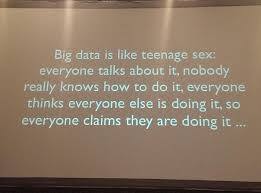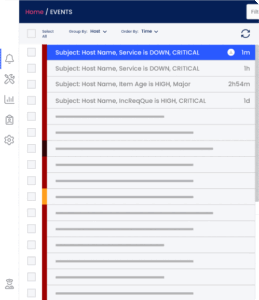Last Tuesday, 40 attendees from across the cloud, SaaS and DevOps spectrum came together to hear from industry leaders about “Best Practices in SaaS Operations” at Google TLV. .
As professionals working in the cloud, hearing from colleagues and professionals offers an opportunity to discuss emerging issues and trends that will shape the future of the industry.
The focus of the conference was to offer practical takeaways about topics that impact all those working in cloud computing.
Here are the key takeaways in order of speakers. We’ve also included their presentations on Slideshare.
Developers are NOT Operations Guys
Ofir Nachmani, Cloud Evangelist at IamonDemand
“DevOps” is meant to denote a close collaboration and cross-pollination between what were previously purely development roles, purely operations roles, and purely QA roles. Because software needs to be released at an ever-increasing rate, the old “waterfall” develop-test-release cycle is seen as broken. Developers must also take responsibility for the quality of the testing and release environments.
The increasing scope of responsibility of the “developer” has given rise to a new job candidate: the “full-stack” developer. Such a developer is capable of doing the job of developer, QA team member, operations analyst, sysadmin, and DBA. Before you accuse me of hyperbole, go back and read that list again. Is there any role in the list whose duties you wouldn’t expect a “full-stack” developer to be well versed in?
Due to constrained resources,companies are forced to take on the role of DBA and fix the issue themselves.
At any one time, a developer at may be acting as a developer, QA tester, deployment/operations analyst, sysadmin, or DBA. That’s just the nature of the business, and some people thrive in that type of environment. Somewhere along the way, however, we tricked ourselves into thinking that because, at any one time, a start-up developer had to take on different roles he or she should actually be all those things at once.
Forcing developers to take on additional roles traditionally performed by specialists means that they:
-
aren’t spending their time developing
-
need to keep up with an enormous domain of knowledge
-
are going to burn out
The Golden Parameters of Monitoring
Ariel Pisetzky, VP Information Technology, Taboola
At the core of the overflow of alerts, lay core business truths. Unfortunately, businesses operating in the cloud are overwhelmed by the alerts and are not refining this critical information to make informed business decisions. In fact, companies should be distilling the alerts to a point where the most important ones reach a top 10 dashboard.
All business & monitoring needs should be consolidated into one screen. Otherwise, the most important information becomes overwhelming and unusable.
Operational Aspects of Big Data
Yoav Chernobroda, CTO, Mythings
What does it mean to be overwhelmed by big data and what are the business implications?
Big Data refers to the idea that companies can extract value from collecting, processing and analyzing vast quantities of data.
The era of Big Data is upon us and the Big Data problem for business is one of linking up their disparate data silos with customer feedback data in order to identify the correlates of customer satisfaction and loyalty. Businesses who can get a better handle on these data will be more likely to outperform their competitors who do not.
Unfortunately, most companies face a complex challenge with big data.
A major hurdle in solving this problem involves applying appropriate data federation and aggregation methods across the different data silos.
Big data should serve as enabler for operational, business intelligence, predictive modeling and real time decision making. While big data should be an enabler, it poses some primary challenges including business value, quality of the data, organizational roles, culture, operational & infrastructure.
By linking up these data sources, companies will be able to ask and answer bigger customer experience questions, embed the importance of the customer across different organizations/departments and provide the use of both subjective and objective metrics of customer loyalty.
Considerations in CDN Implementation
Shalom Carmel, CTO, GlobalDots
The concept behind a CDN is to enable A content delivery network (CDN) is an interconnected system of computers on the Internet that provides Web content rapidly to numerous users by duplicating the content on multiple servers and directing the content to users based on proximity. The primary advantages of a CDN are that it
- decreases latency
- stops server sprawl
- increases security
When choosing a CDN for a business, three primary factors about the nature of the data, engagement and traffic need to be considered.
The use of CDN technology has obvious economic advantages to enterprises who expect, or experience, large numbers of hits on their Web sites from locations all over the world. If dozens or hundreds of other users happen to select the same Web page or content simultaneously, the CDN sends the content to each of them without delay or time-out.
When deploying a CDN, companies should user experts, learn the language, the application, infrastructure and understand the importance in monitoring the network to ensure proper function.
NOC as a Strategic Business Decision
Avi Shalisman, CEO, MoovingON
NOC are always a great deal of pressure to meet both technical and business service demands. In the past several years NOCs have played an even more crucial role of the company, taking on more tasks and responsibilities. With this, technological issues arise at unexpected times. While the number of unforeseen problems increase, the resources within an organization always decrease.
By elevating the NOC to a strategic business decision, companies will ensure that the proper tools, skills and processes are being deployed to run an efficient operation.










